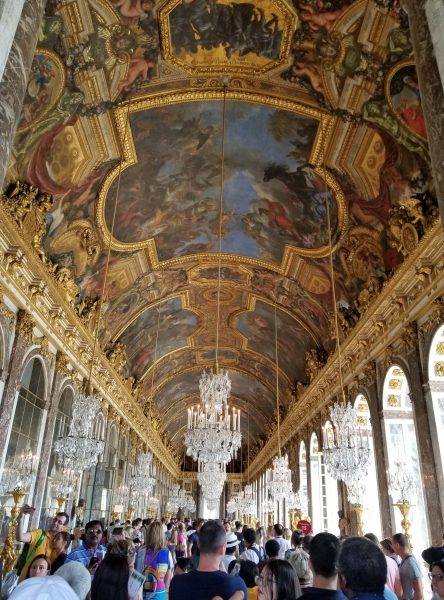Today, Ted and I went to Versailles, another place near Paris we didn’t have time to see on our 2016 visit to the city. Versailles started as a small hunting lodge for the king. It was enlarged by each of its three resident kings–most famously Louis XIV, the “Sun King”–and its opulence became the model for future European palaces. It is now a UNESCO World Heritage Site.







Our guide shared two very human stories about Versailles’ history. First, Louis XIV, France’s longest reigning monarch (72 years) waged many wars. By the time he died, the country was tired of war (and broke). If a king isn’t waging war, he has time to make babies so, not surprisingly, Louis XV had 10 children–he made love, not war. Unfortunately, only one of his children survived.
The second story was about Marie Antoinette, and portrays her in a sympathetic way. She was only 14 when she married 15-year-old Louis XVI, and she was only 19 when she became queen. As a result, she was more naive than heartless when she reportedly said that if there was no bread for the people, “let them eat cake.” She and Louis XVI did not have children for a number of years. In fact, pundits were asking “Can the king do it?” Eventually, they had four children, although one infant died. Marie Antoinette was a very good mother, and cared deeply about her children. The portrait pictured below shows her with her three living children and an empty cradle to symbolize the child who died.

It was good to get back to our air-conditioned hotel, but the opportunity to see Versaille was worth the time. Tonight, it’s party time!